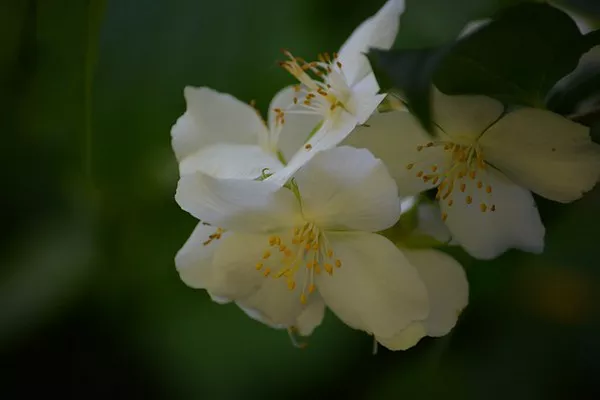In the world of gardening, the misconception that all flowering plants require ample sunlight prevails. However, there is a diverse and captivating array of plants that thrive in shade, showcasing nature’s adaptability and resilience. As gardening enthusiasts seek sustainable and versatile options for their landscapes, understanding the specific needs of flowering plants that prefer shade becomes crucial. This article explores the fascinating realm of shade-loving flowering plants, shedding light on the nuances of their care and the aesthetic benefits they bring to shaded gardens.
The Beauty of Shade-Loving Flowers
Shade-loving flowering plants have a unique charm that sets them apart from their sun-loving counterparts. These plants often boast lush green foliage and vibrant blooms that can transform shaded areas into enchanting, cool retreats. From delicate woodland wildflowers to elegant ferns and striking hostas, the world of shade-loving plants offers a diverse palette for gardeners to explore.
Understanding Shade
Before delving into the world of shade-loving flowering plants, it is essential to comprehend the different types of shade. Shade can be categorized into partial shade, dappled shade, and full shade. Partial shade implies that an area receives sunlight for only part of the day, while dappled shade occurs when sunlight filters through the leaves of overhead trees, creating a speckled pattern on the ground. Full shade refers to areas that receive minimal to no direct sunlight.
Choosing the Right Plants for Shade
Selecting the appropriate flowering plants for shaded areas requires careful consideration of the specific type of shade present. Some plants thrive in the gentle sunlight of partial shade, while others are adapted to the subdued light of full shade. Understanding the light conditions in your garden is the first step in creating a thriving and visually appealing shaded landscape.
Full Shade Champions
a. Hostas (Hosta spp.): Renowned for their striking foliage, hostas are excellent choices for areas with minimal sunlight. Available in a variety of sizes and colors, these plants add texture and elegance to shaded gardens.
b. Bleeding Heart (Dicentra spectabilis): With its unique heart-shaped blooms, the bleeding heart is a classic choice for full shade. This perennial plant adds a touch of romance to shaded borders.
c. Astilbe (Astilbe spp.): Known for its feathery plumes in shades of pink, red, and white, astilbe thrives in the cool and moist conditions of full shade. It is a favorite for creating lush and vibrant shade gardens.
Partial Shade Prowess
a. Lungwort (Pulmonaria spp.): This hardy perennial is valued for its silver-spotted leaves and early spring blooms. Lungwort is well-suited to partial shade, adding color to garden beds before many other plants have started flowering.
b. Coral Bells (Heuchera spp.): Celebrated for its diverse foliage colors, coral bells are versatile plants that flourish in partial shade. They offer a striking contrast in both leaf shape and color.
c. Toad Lily (Tricyrtis spp.): Uniquely charming, toad lilies thrive in the dappled sunlight of partial shade. Their orchid-like blooms add a touch of exotic beauty to shaded gardens.
Caring for Shade-Loving Flowers
While shade-loving plants are generally more forgiving than their sun-loving counterparts, proper care is essential for ensuring their optimal growth and development.
Soil Quality: Most shade-loving plants prefer well-draining soil rich in organic matter. Amending the soil with compost or well-rotted manure can improve fertility and structure.
Watering: Shaded areas often retain more moisture, creating a conducive environment for fungal diseases. It is crucial to water these plants consistently, allowing the soil to dry slightly between waterings to prevent waterlogged conditions.
Mulching: Mulching is beneficial for moisture retention and weed suppression. Applying a layer of organic mulch around the base of shade-loving plants helps maintain soil moisture and keeps the root zone cool.
Fertilization: While shade-loving plants are generally less demanding in terms of fertilization, providing a balanced, slow-release fertilizer in spring can support healthy growth and abundant blooms.
Pruning: Regular pruning helps maintain the shape and appearance of shade-loving plants. Removing dead or yellowing leaves can improve air circulation, reducing the risk of diseases.
See Also: How To Press Flowers With An Iron?A Comprehensive Guide
Benefits of Shade-Loving Gardens
Beyond their aesthetic appeal, shade-loving gardens offer various benefits that make them a valuable addition to any landscape.
Energy Efficiency: Shaded areas in the garden contribute to energy efficiency by reducing the heat absorbed by buildings during hot summer months. This can translate into lower cooling costs for homes.
Biodiversity: Shade-loving plants often provide habitat and food sources for diverse wildlife, including birds, insects, and small mammals. Creating a shaded garden fosters biodiversity and contributes to the overall health of ecosystems.
Erosion Control: The root systems of shade-loving plants help prevent soil erosion by stabilizing the soil structure. This is particularly beneficial in areas with slopes or uneven terrain.
Year-Round Interest: Many shade-loving plants, such as evergreen ferns and hellebores, provide year-round interest with their persistent foliage. This ensures that shaded areas remain visually appealing even during the winter months.
Conclusion
In the pursuit of creating vibrant and sustainable gardens, understanding the unique needs of shade-loving flowering plants is essential. These resilient plants not only thrive in low-light conditions but also bring a sense of tranquility and elegance to shaded landscapes. By selecting the right plants, providing proper care, and appreciating the multifaceted benefits of shade-loving gardens, gardeners can unlock the full potential of these captivating and often overlooked botanical wonders. Embrace the shade, and let your garden flourish in the subtle beauty of nature’s cool retreats.


